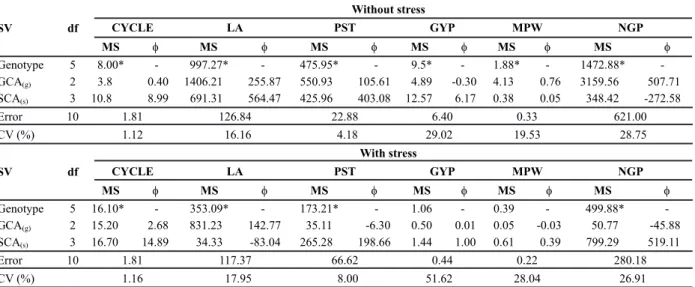Diallel analysis in white oat cultivars subjected to water stress
Texto
Imagem



Documentos relacionados
The soybean cultivars ‘Potência’ and ‘Valiosa’ co- inoculated with Azospirillum brasilense in the seeds showed higher number of pods per plant, 100 grain weight and grain
Figure 5 - Number of grains per panicle (A), spikelet sterility (B), grain weight (C), and grain yield (D) of four rice cultivars per rate of imazamox, in the 2008/09 season...
Aspects of morphology and productivity, such as plant height, root length, number of pods per plant, number of grains per pod, 100-grain weight, final grain yield and dry weight,
Juvenile Brycon amazonicus is more resistant to stress when subjected to sustained swimming and high stocking densities than when subjected to static water, showing a decrease
When subjected to the water stress, the seeds of the CD 208 soybean cultivar presented less oxidative stress and lower percentage of weathering damages, apparently due to the higher
evaluated the genetic gain for resistance to angular leaf spot in common bean and found indirect gain for grain yield and grain type after eight selection cycles (2.3% for yield and
Means of the characters grain yield (GY), weight of a thousand grains (WTG), hectoliter weight (HW), panicle weight (PW), grain weight per panicle (GWP), number of grains per
This decrease in water availability leads to an increase in hydric stress, which is expected for mesophytic species subjected to stress (KRAMER; BOYER, 1995; LARCHER, 2004).